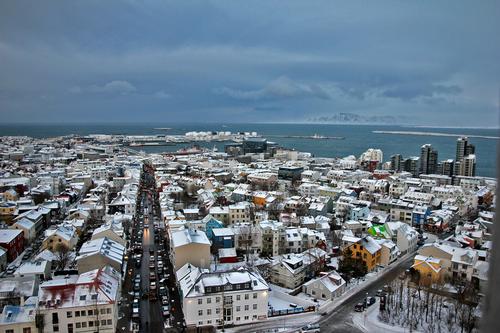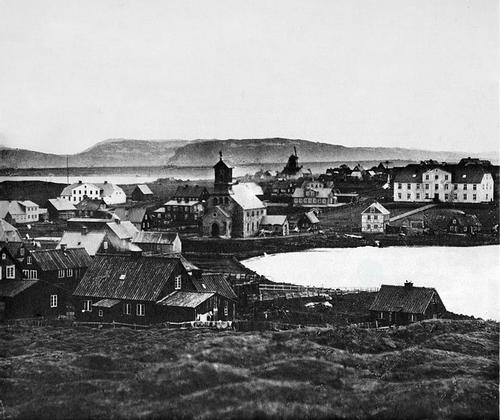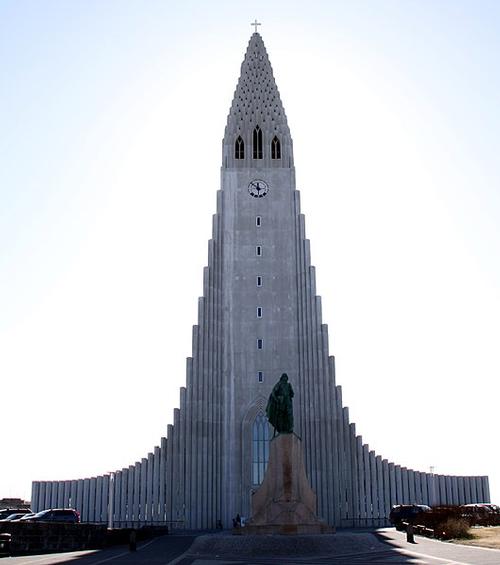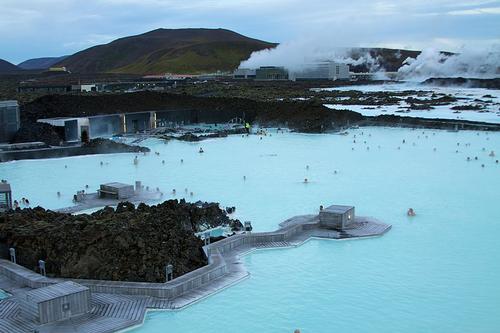ICELAND
Reykjavik

Reykjavik
Reykjavik
Reykjavik is the capital of Iceland and therefore the most northerly capital of the world. It is a big city with an idiosyncratic character. The city cannot be compared with any other city. You will encounter everything from beautiful nature to impressive urban architecture.
 ReykjavikPhoto: Kjell Joran Hansen CC 3.0 Unported no changes made
ReykjavikPhoto: Kjell Joran Hansen CC 3.0 Unported no changes made
Location
Reykjavik is located in the southwest of the island of Iceland on the Kollafjörður fjord. There are six islands in the fjord that can be visited from Reykjavik. Reykjavik has an area of 274.5 km² and about 120,000 people live there.
Weather
Despite the fact that Reykjavik is located very north, the weather is fairly mild. This is of course due to the influence of the Atlantic Ocean that surrounds the country. Winters are fairly cold, but do not last long. In the months of November, December and January the city is only light for a few hours a day. The beautiful flaming northern lights are therefore the best to perceive. Summers are long with pleasant, mild temperatures that hardly ever exceed 20 degrees.
History
Ingólfur Arnarson, a Norwegian chieftain, was the first settler to settle in Iceland around the year 877. Seeing steam coming from the hot springs on the coast, he decided to name the place Reykjavik, which means smoke bay.
Reykjavik barely grew and in the Middle Ages was nothing more than a small village with farms. Reykjavik was granted city rights in 1768, but the city still had only 170 inhabitants at the time.
 Reykjavik in 1860Photo: Public Domain
Reykjavik in 1860Photo: Public Domain
The city then grew faster to 6,300 inhabitants in 1900. In 1918 Iceland became a sovereign state under the crown of Norway. The main source of income was fishing, especially cod fishing.
At the beginning of the Second World War, Iceland was neutral. When Allied warships docked in Reykjavik harbor in May 1940, they surrendered without resistance. The occupation worked out well for Iceland, because the unemployment rate that existed before was almost entirely reduced by the new construction projects in the city. In 1944 the Republic of Iceland was a fact, from then on there was no longer a king at its head, but a democratically elected president.
After the war, Reykjavik's time had come and the city was experiencing great growth. More and more people moved to the big city because of the modernization in agriculture, there was little work in the countryside.
Sights
 Hallgrímskirkja ReykjavikPhoto: Martin Putz CC-by-sa 3.0 no changes made
Hallgrímskirkja ReykjavikPhoto: Martin Putz CC-by-sa 3.0 no changes made
Named after a renowned Icelandic poet and clergyman, the Hallgrímskirkja in Reykjavik is Iceland's largest church. This imposing white church, which is also situated on a hill, can be seen from all over the city. The church was designed by Guðjon Samúelsson. The construction of the church started in 1945 and the Hallgrímskirkja was not finished until 40 years later. The church has a fairytale appearance both inside and out. And we're not even talking about the phenomenal view from the 73 meter high tower!
The main collection of paintings and works of art is housed in the National Gallery of Iceland, in the center of Reykjavik. The museum dates back to the mid-1880s. This museum is home to many different styles, ranging from traditional Icelandic oil paintings to rather vibrant modern pieces. The Reykjavik Art Museum (Kjarvalsstadir) is also worth a mention and is dedicated to one of the country's leading artists, Johannes Kjarval.
 Blue Lagoon ReykjavikPhoto: McKay Savage CC 2.0 Generic no changes made
Blue Lagoon ReykjavikPhoto: McKay Savage CC 2.0 Generic no changes made
Another unforgettable part of Reykjavik is the Blue Lagoon. It is a pool heated by the heat sources that Ingólfur Arnarson saw when he first met the city. You can swim here in the middle of a unique, wild lava landscape. The water is on average 37 degrees and has a beneficial effect on the body.
Tips
If you go to Reykjavik, it is definitely recommended to view the Northern Lights. This is most visible in the winter months, but it can also be observed in the spring. The dark sky turns into a real natural light show.
If you are interested in the history of Iceland, go to the Saga Museum where Icelandic history has the leading role.
Useful links Reykjavik
BBC Country ProfilesWorld Fact Book Explore all Countries
How to call
Last updated November 2025
Copyright: Team - The World of Info